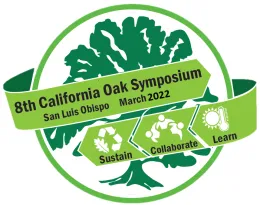#4

Jill J. Beckmann, School of Forestry, Northern Arizona University
Rosemary L. Sherriff; Department of Geography, Environment, & Spatial Analysis, Humboldt State University
Lucy P. Kerhoulas, Department of Forestry and Wildland Resources, Humboldt State University
Jeff M. Kane, Department of Forestry and Wildland Resources, Humboldt State University
Oregon white oak (Quercus garryana Douglas ex Hook.) is experiencing increasing competition from Douglas-fir (Pseudotsuga menziesii (Mirb.) Franco) across its range at the same time as climate models are predicting increasing climate variability, including drought. An improved understanding of the combined effects of competition, climate, and drought is therefore needed to inform management of oak woodlands in an altered climate. Across a broad range of crowding conditions, we used linear mixed effects models to evaluate the effects of tree diameter, Douglas-fir crowding, oak crowding, and climate on Oregon white oak and Douglas-fir tree growth (2002-2016) and drought response (2013-2015). Here, we focus on highlighting our findings from an important and representative site in a network of sites across the North Coast region of California. Oregon white oak growth had positive relationships with winter and summer precipitation, spring mean maximum temperature, and September maximum temperature; and negative relationships with oak crowding, Douglas-fir crowding, and summer maximum temperature. Douglas-fir growth had a positive relationship with late spring precipitation and negative relationships with Douglas-fir crowding and summer mean maximum temperature. Oregon white oak growth was more resistant to prolonged drought than Douglas-fir. However, oak resistance to drought was also negatively related to Douglas-fir crowding and positively related to oak crowding. These results suggest that Oregon white oak may be better suited to a future climate than Douglas-fir, but Douglas-fir encroachment may threaten the ability of Oregon white oak to resist future drought. Prevention and management of Douglas-fir encroachment and maintenance of variable oak density is expected to optimize the vigor and drought resistance of Oregon white oak and best preserve ecosystem function under climate change.
